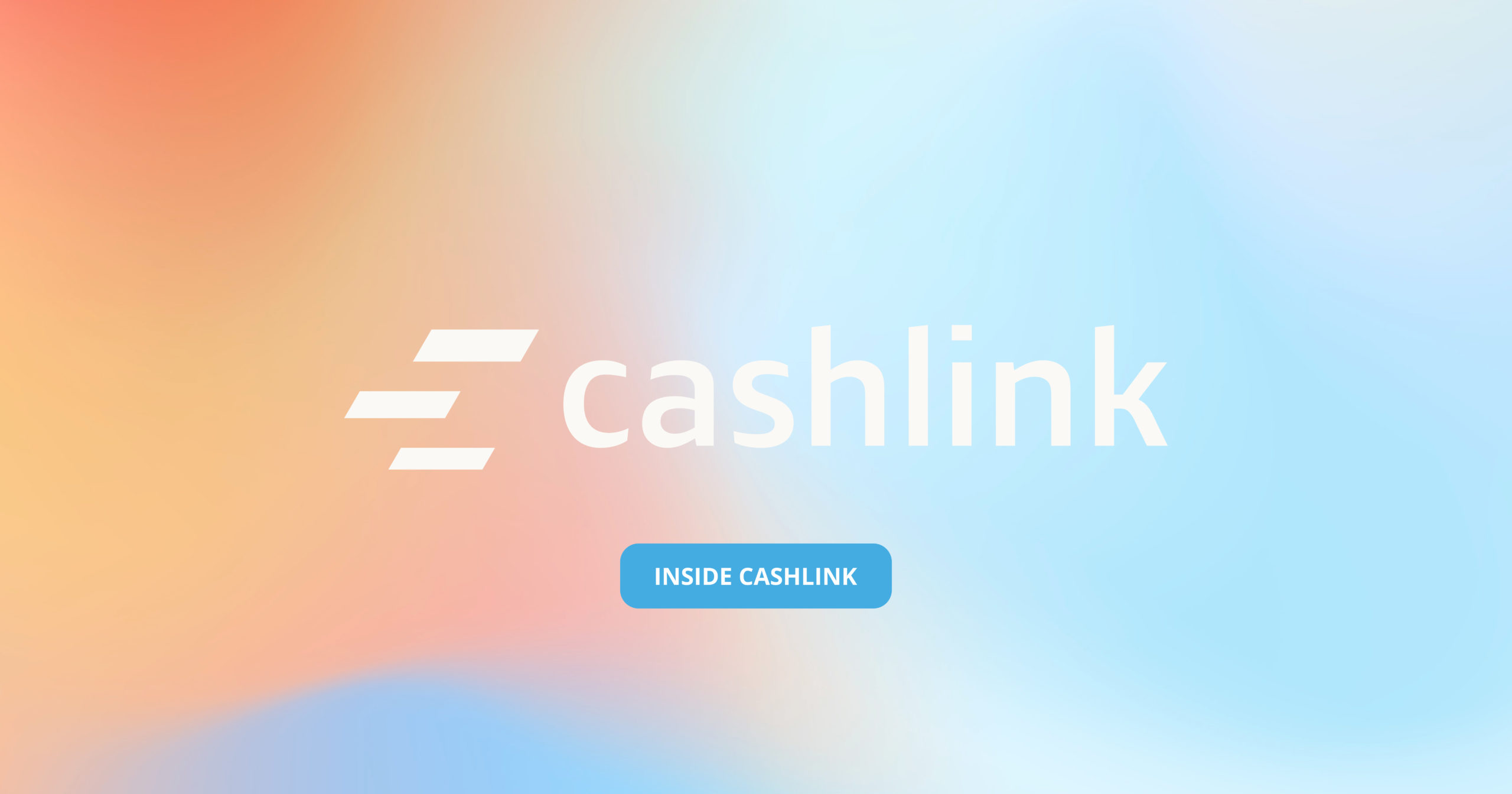

Inside CASHLINK
How we issued one of the first digital securities on the Ethereum blockchain




Last week we proudly announced that we have issued a digital security on the Ethereum blockchain. After our achievement has been covered by the media, a lot of questions raised about what this security actually was and how issuing a security on Ethereum works. In this blog post, I will try to answer your questions and explain the mechanics of the security.
Our goal was to create a digital security that enables professional investors like business angels to easily fund high-growth-companies and start-ups like we are.
Such investments are normally managed via the company’s cap table. For this post, I will assume that you are familiar with the mechanics of venture capital financing rounds. If not, this passage is for you: In short, investors give money to the company in exchange for a certain amount of the registered share capital. We call those investors cap table investors. Owning a part of the share capital grants them certain rights (like receiving money in case the company gets sold).
This way, the issuance of new shares to investors is a time-consuming and expensive process for all parties that involves lawyers and notary services. The same applies to the transfer of shares when transaction costs exceeding EUR 2000 and more are not unusual.
In contrast, blockchain technology enables issuing and transferring securities on the blockchain with transaction costs less than 10 cents. Therefore, we set the goal to create a digital security on the Ethereum blockchain that startups can sell in exchange for money to build their company. That said, the digital security must grant its owners the same rights as cap table investors.
A good starting point to explain how our digital security achieves that is probably the moment when owners of the security get paid out: They receive a payment every time the cap table investors receive a payment. That happens for example when
- the cap table investors sell their shares to a new investor (a so-called “secondary”),
- the company does an IPO and the cap table investors are compensated for their shares, or
- the company distributes dividends to its cap table investors.
If one of those situations occurs, the company that has issued the digital securities is contractually obliged to not only send money to its cap table investors, but also to the owners of the digital security.
Let’s do an example:
Consider you and your best friend are the founders of a company called “Awesome Tech GmbH” with a registered share capital of EUR 30,000. You and your friend alike own 15,000 shares because, well, you believe in fairness. Three years of hard work go by and a private equity firm wants to buy your company for a total amount of EUR 12,000,000. Both of you would then receive EUR 6,000,000. This scenario only involves the “real” cap table which can be looked up in the commercial register. Nice deal, by the way!
This simple scenario only involves the real cap table that can be looked up in the commercial register.
But let’s be honest: In most cases, this is very unrealistic. Usually, you need more money to get the company started. So let’s say after founding the company, you issue 15,000 shares of a digital security with a value of one share in the registered share capital of your company. In exchange for selling the digital security, you receive EUR 750,000 to hire new employees and buy them enough coffee. That means you sold for a price of EUR 50 per share of the digital security (and the registered capital). That is a post-money valuation of EUR 2,250,000. Good job!
After the issuance, the “real” cap table still shows 30,000 shares. However, the now existing “virtual” cap table has an additional number of 15,000 shares. In total, that makes 45,000 shares.
The effective cap table consists of the real shares and the virtual shares that can be looked up on the Ethereum blockchain.
So, if the private equity firm now buys your company three years later for a total amount of EUR 12,000,000, they are obliged to pay the two of you EUR 4,000,000 each and the owners of the digital security receive EUR 4,000,000, as well. The difference between this amount and the paid EUR 750,000 is their return on investment. As you can see, the effective payouts are computed with the “real” and the virtual cap table at hand. The virtual cap table can be looked up using the Ethereum blockchain. Here you can have a look at our virtual cap table.
Startups will use a hybrid form of digital and traditional investments
Being in the cap table in comparison to owning a share of the digital security nevertheless has some advantages like extensive voting rights in the company. So, some investors will want to be in the “real” cap table. Let’s modify our example to see that such a hybrid form of investment will actually work quite well:
Back to you and your friend still owning the company by 50%, so to say 15,000 shares. Now, a new cap table investor wants to buy in and gives you EUR 750,000 in exchange for 15,000 new shares. Again, that equals a price of EUR 50 per share and a post-money valuation of EUR 2,250,000. However, you do not want to waive the money of investors willing to buy digital securities and issue 15,000 shares of the digital security in exchange for EUR 750,000, meaning also EUR 50 per share of the security and a post-money valuation of EUR 3,000,000.
Mathematical side-note: If you do that, the value of the shares of your cap table investors is NOT diluted. Prior to the issuance of the digital security, their shares were 33.33% and now they’re only 25.00%. But the post-money valuation has increased just as well from EUR 2,25M to EUR 3,00M!
Okay, let’s sum this up (and you probably already know where this is heading to): After the issuance of both real shares and the digital security, the effective cap table consists of 60,000 shares (45,000 real and 15,000 virtual ones). When the private equity firm buys your company, they will pay EUR 2,000,000 to you and your friend, EUR 2,000,000 to the cap table investors and EUR 2,000,000 to the owners of the digital security.
Cap table investors still get real shares and are part of the cap table. Owners of the digital security are part of the virtual cap table.
To be honest, this example is pretty straight-forward because of the share price increasing from EUR 50 to EUR 200. You may find yourself asking what would happen in case of a down round, meaning the share price decreases. To protect owners of the digital security against dilution during such down rounds, we build a special mechanism. We have covered this scenario in detail in another blog post.
How can investors sell their digital security?
Each share of the digital security is registered on the Ethereum blockchain. During issuance, the ownership is associated with an Ethereum address. After that, the investor can use their private key to initiate transactions to other Ethereum addresses. If that happens, the rights bound to the digital security are transferred as well. This also enables trading of the digital security, given the case that there is enough liquidity in the market.
Funding startups and transferring shares in the company should be easily accessible and simple for startups and investors alike. We mapped lawyers, notaries and traditional cap tables on the blockchain by building one of the first digital securities. This is part of our way forward to realize the vision of a fully digitalized investment process.
Starten Sie Ihr eigenes Tokenisierungsprojekt
- Unverbindliche & kostenlose Erstberatung durch Experten
- Individuell an Ihre Bedürfnisse angepasste Lösung
- Digitalisierungsprojekte einfach, flexibel & transparent umsetzen


Haben Sie weitere Fragen zu unseren Produktpaketen?
Ich bin Michael, Co-Founder und CEO von Cashlink Technologies! Sollten Sie Fragen zu den einzelnen Produktpaketen haben, zögern Sie nicht und vereinbaren Sie gerne einen unverbindlichen Beratungstermin mit unserem Expertenteam – dieser sollte alle offenen Fragen klären!